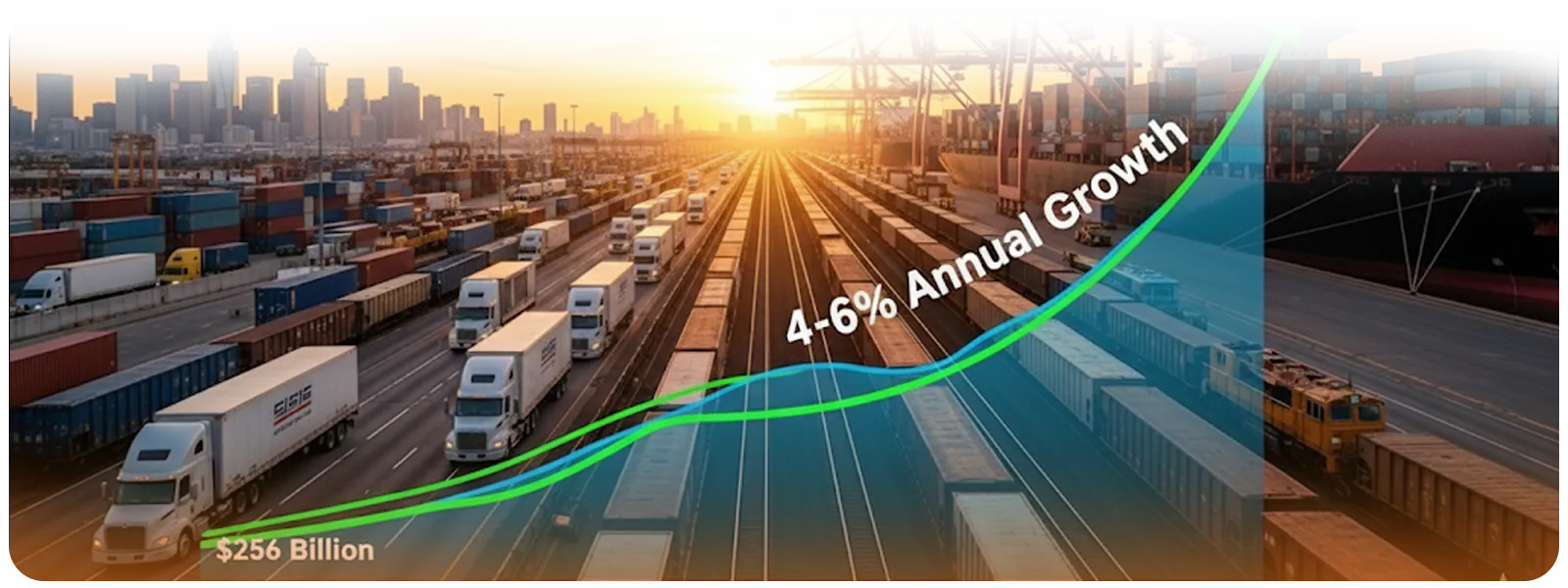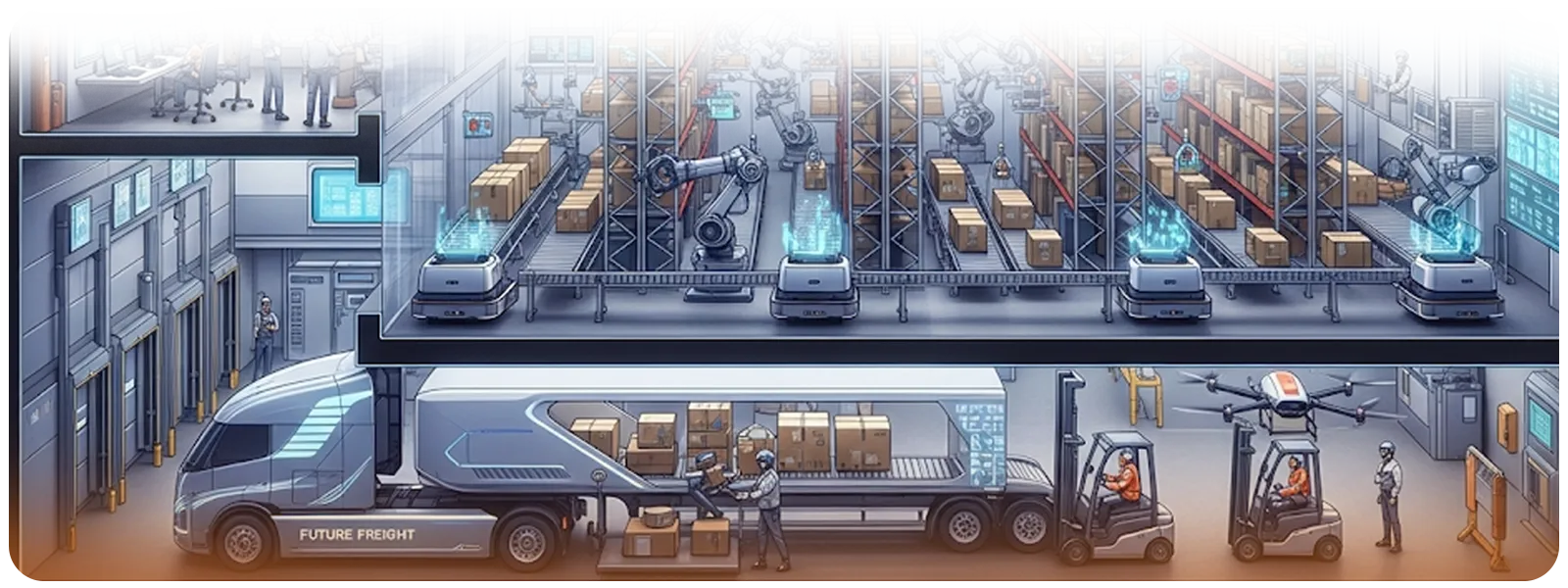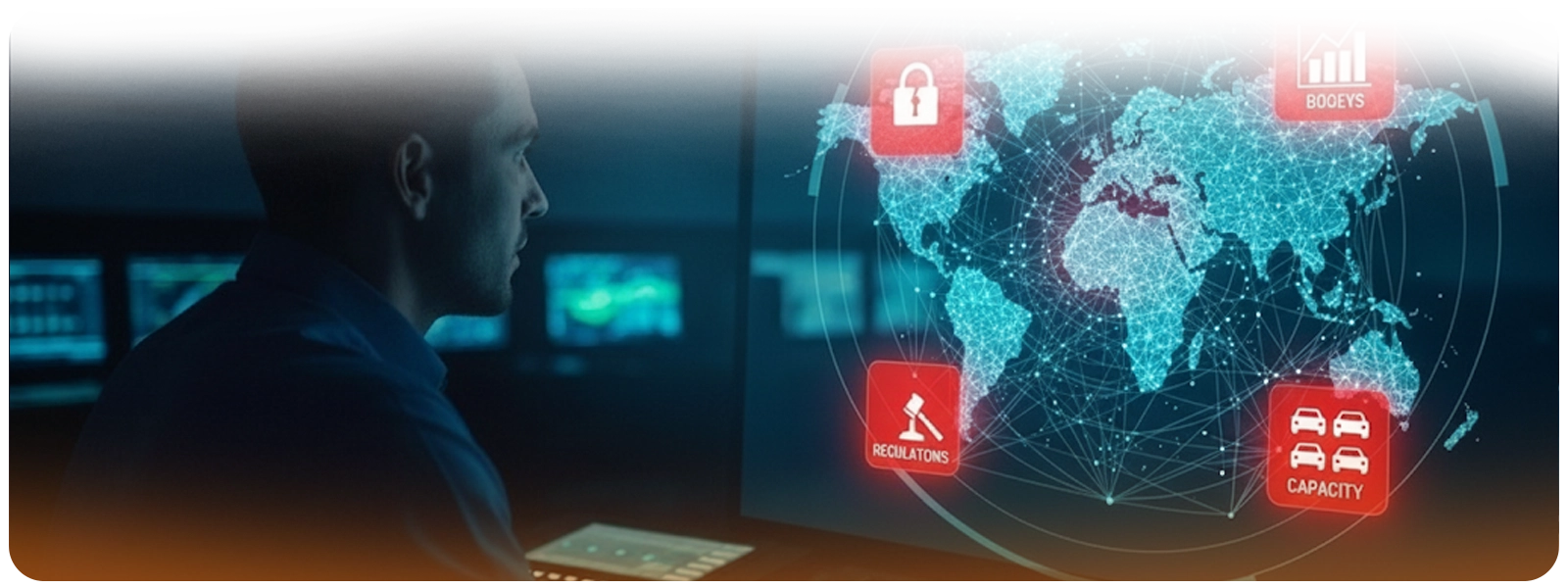
Future of Logistics Outsourcing in the U.S.: Trends to Watch in 2025
The logistics outsourcing market in the United States is already massive, worth more than $250 billion and projected to grow steadily over the next five years.
For supply chain managers, outsourcing isn’t just about cutting costs anymore; it’s about building resilience, unlocking visibility, and accessing technology that in-house teams often can’t match.
As 2025 unfolds, new forces are shaping the future of outsourced logistics: from AI-driven optimization and sustainability mandates to workforce shortages and nearshoring strategies.
This article highlights the most important trends supply chain leaders need to track, and how choosing the right 3PL or 4PL partner can determine whether you stay ahead or fall behind.
U.S. Logistics Outsourcing Market Outlook

The U.S. third-party logistics (3PL) market is valued at more than $256 billion in 2024 and is projected to expand at a steady 4–6% annually through 2029.
This growth reflects the mainstream adoption of outsourcing - over 90% of Fortune 500 companies now rely on 3PLs for at least part of their supply chain operations.
The drivers are clear: explosive e-commerce demand, rising transportation costs, and the need for specialized technology such as advanced transportation management systems (TMS) and real-time tracking.
For supply chain managers, outsourcing provides immediate access to scale, efficiency, and innovation without the capital burden of building those capabilities in-house.
Top Logistics Outsourcing Trends in 2025

Discover how technology, sustainability, and shifting supply chains are redefining the way companies outsource logistics this year.
AI and Automation
By 2025, 80% of logistics firms are expected to leverage AI for real-time inventory visibility, predictive routing, and demand forecasting. Automation is no longer a “nice-to-have”; robotics and cobots are becoming standard in warehouses to boost speed and accuracy.
For supply chain managers, outsourcing to 3PLs with strong AI-driven TMS and WMS platforms can mean fewer disruptions, faster deliveries, and better cost control.
Sustainability & Green Logistics
Environmental goals are shaping outsourcing decisions. Providers are investing in electric trucks, hydrogen vehicles, and renewable fuels to meet both regulatory requirements and customer expectations. In 2025, many contracts include
Scope 3 emissions reporting, forcing shippers to choose 3PLs that help reduce their carbon footprint. Green logistics isn’t just ethical, it also cuts costs through smarter routing and reduced fuel use.
Last-Mile Delivery Innovation
The last mile accounts for more than 53% of total shipping costs, and the U.S. market is projected to hit $200 billion by 2025. To compete, 3PLs are adopting micro-fulfillment centers, gig economy delivery models, and even piloting drones.
Outsourcing last-mile logistics helps supply chain managers meet rising consumer expectations for speed and flexibility, without absorbing the steep infrastructure costs. [Statista]
Nearshoring & Regional Supply Chains
Nearshoring is reshaping freight flows. U.S.–Mexico trade reached record levels in 2024, and in 2025, more companies are moving production closer to home to reduce geopolitical risk and transit times.
This creates growing demand for 3PLs with cross-border expertise and infrastructure in Mexico and Canada.
For managers, choosing the right partner ensures smooth customs, compliance, and regional distribution. [U.S. Census Bureau]
Talent Shortages
The logistics workforce remains under strain: the driver shortage could double by 2028, while warehousing continues to face hiring challenges. Labor costs rose nearly 10% in the past year, pressuring margins.
Outsourcing is increasingly about accessing skilled talent and managed services, from control tower operations to freight planning, that companies struggle to staff internally. Providers that invest in workforce stability and training will be the most valuable partners.
Risks Supply Chain Managers Must Watch

Outsourcing delivers efficiency, but it also introduces vulnerabilities that supply chain managers must proactively manage. Four categories stand out in 2025:
- Cybersecurity threats: With 3PLs increasingly reliant on connected systems and IoT devices, they’ve become prime targets for hackers. A single breach can halt operations or expose sensitive shipment data.
- Regulatory shifts: From stricter emissions rules to labor laws like California’s AB5, compliance is more complex than ever. Sudden tariff changes or trade restrictions can also reshape freight flows overnight.
- Cost volatility: Fluctuating fuel prices and rising wages put pressure on 3PL contract rates. Without flexible agreements, budgets can quickly spiral.
- Capacity swings: Economic ups and downs lead to alternating periods of oversupply and bottlenecks. Relying too heavily on one provider makes businesses especially vulnerable.
Diversifying providers and negotiating adaptable contracts are essential safeguards.
Competitive Landscape in 2025
The U.S. logistics outsourcing space is dominated by a blend of established 3PL giants, fast-moving disruptors, and specialized regional players. Each brings different strengths to supply chain managers seeking the right fit.
- 3PL Giants: Amazon’s fulfillment network (>$140B), C.H. Robinson, J.B. Hunt, UPS Supply Chain Solutions, DHL, and GXO Logistics lead in scale, technology, and nationwide coverage.
- Disruptors: Flexport, Uber Freight, and ShipBob emphasize digital-first platforms, real-time visibility, and transparent pricing models.
- Specialists: Companies like NFI, Schneider, and Ryder offer deep expertise in specific industries such as automotive, retail, and dedicated trucking.
Many companies are now adopting a multi-3PL strategy, outsourcing different functions (e.g., warehousing, last mile, international forwarding) to best-fit providers.
This approach maximizes flexibility but requires strong coordination, or a 4PL/lead logistics partner, to ensure smooth integration.
Preparing for the Future of Logistics Outsourcing

In 2025, outsourcing logistics is no longer just a cost-saving tactic; it’s a strategic lever for resilience, speed, and competitive advantage.
With trends like AI adoption, nearshoring, sustainability, and last-mile innovation accelerating, the choice of provider matters more than ever.
FAQs on Logistics Outsourcing in 2025
What are the benefits of outsourcing logistics?
The biggest advantages are cost savings, scalability, access to advanced technology, and improved customer satisfaction. Many companies also outsource to strengthen resilience during disruptions.
Which logistics functions are most often outsourced?
Transportation, warehousing, order fulfillment, and last-mile delivery are the most common. Some firms also outsource planning and control tower operations.
How do I choose the right 3PL in 2025?
A: Look for providers with proven technology integration, sustainability practices, labor stability, and clear risk management processes.
Is outsourcing logistics risky?
Risks include cybersecurity threats, fuel and labor cost volatility, and over-reliance on a single provider. Contracts and diversification help mitigate them.
How will AI change logistics outsourcing in 2025?
AI is powering predictive routing, smarter demand forecasts, and real-time tracking. Combined with warehouse robotics, it helps 3PLs cut costs and speed up deliveries.


